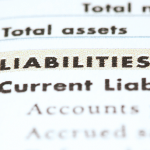Net income at The Hartford for the fourth quarter of 2021 ended at $729 million, a 36 percent increase from income of $537 million the same period a year earlier.
For the year, net income was about $2.37 billion compared to $1.74 billion in 2020.
The Hartford, Conn.-based insurer’s commercial lines segment doubled net income for the year ($1.76 billion), with $702 million booked in fourth-quarter 2021—a 47 percent increase from the prior year. These positive results offset drops in fourth-quarter (52 percent) and yearly (46 percent) income to $81 million and $385 million, respectively, in the personal lines segment.
CEO Christopher Swift said during an earnings call that momentum continued in commercial lines with “stellar margins in double-digit top-line growth, reflecting higher new business levels, continued strong retention and solid renewal price increases.”
The Hartford reported a 14 percent increase in commercial lines written premiums to $2.51 billion in the fourth quarter, with a $204 million jump in underwriting gain. The Hartford said an increase in insured exposure, higher new business and strong policy retention in small commercial drove results.
There was 12 percent growth in commercial lines earned premium and a $27 million drop in COVID-19 losses in the last three months of 2021, to $1 million. The fourth-quarter combined ratio in commercial lines improved to 84.6 compared to 91.8 during the same time a year ago.
Meanwhile, in personal lines, the fourth-quarter combined ratio increased 14.1 points to 93.9. Underwriting gains decreased 71 percent to $45 million for the fourth quarter and fell 63 percent to $275 million for all of 2021.
Looking ahead in 2022, Swift said he expects earned pricing to continue to exceed loss cost trends in most lines, improving margins.
“We expect that consumer capacity to spend will remain strong, which will drive economic growth,” Swift said. “The U.S. unemployment rate has fallen to 3.9 percent and is likely to fall below pre-pandemic levels by year-end. We are seeing signs of increases to workforce participation.”
“In 2022, we expect inflation to be challenging in the first half of the year,” he added. “However, as supply chains gradually improve, consumption transitions from goods to services and interest rates rise, we believe core inflation in the second half of the year will decline to the 3 percent range.” Economic improvement is also expected to grow commercial lines, with new-business formation especially in small commercial, Swift said.





















 Hurricane Wind Speeds Increased by 18MPH Over Past Five Years: Study
Hurricane Wind Speeds Increased by 18MPH Over Past Five Years: Study  Blacks and Hispanics Pay More for Auto Insurance. Study Tries to Answer Why.
Blacks and Hispanics Pay More for Auto Insurance. Study Tries to Answer Why.  Swiss Re Execs Sleeping Well After $2.4B Q3 Reserve Boost
Swiss Re Execs Sleeping Well After $2.4B Q3 Reserve Boost  Allstate Thinks Outside the Cubicle With Flexible Workspaces
Allstate Thinks Outside the Cubicle With Flexible Workspaces 




